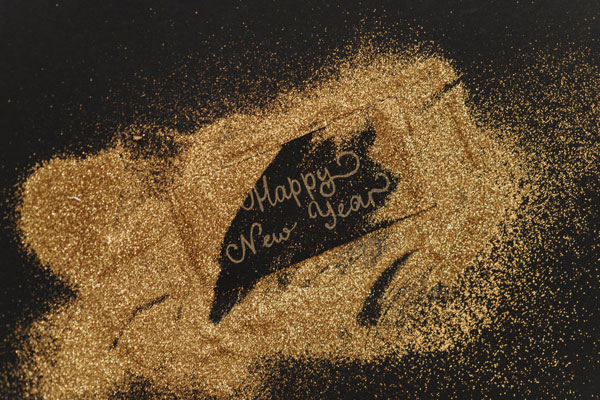The New Year is Celebrated by Eating Grapes and Shattering Dishes

[Photo Credit to Pexels]
Recent viral TikTok videos have showcased the Spanish tradition, “Las doce uvas de la suerte,” where people eat 12 grapes under the table before midnight.
Around the world, unique traditions mark the celebration of the New Year.
Posts attribute finding partners in the corresponding year to this tradition, suggesting that it brings good luck.
This custom has gained international attention, with the hashtag #12grapes garnering over 68.5 million views.
So, what exactly is this custom, and how did it start?
Although the exact origin may remain debatable, a popular story is that farmers in Alicante had a surplus of grapes in 1909 and needed a creative way to sell them.
Yet, recent newspaper article discoveries trace the custom back to the 1880s, with Madrid’s bourgeoisie adopting the French New Year's Eve practice of grapes and champagne.
It's believed that commoners mockingly imitated this upper-class tradition at Madrid’s Puerta de Sol during midnight bell chimes, thus giving birth to the custom.
Then how do the Spaniards specifically carry out this tradition?
First, 80% of the grapes that they eat are from the valley of Vinalopó in central Alicante, on Spain's Mediterranean coast.
The grapes are protected by Denominación de Origen, or designation of origin, and status, and are wrapped in paper bags in June and July to ripen, then harvested during November or December.
This practice, dating back to the late 19th century, was initially aimed at shielding the grapes from cochylis vine moths.
The grapes, pale green and sweet, are sometimes de-seeded for easier consumption, though some argue that this is cheating.
Upon acquiring the grapes, all they do is sit underneath the table and start eating them at 11:59 PM, one along with the chime of the bell which rings 12 times from Madrid's central Puerta del Sol clock tower, symbolizing good luck for each upcoming month.
You have to finish chewing completely, or else it is believed to have the opposite effect and bring bad luck.
They may even be wearing a red underwear garment given by someone else to bring extra luck to them next year.
Spain isn’t the only country with unique traditions for welcoming the New Year.
For instance, Japan celebrates the new year with a tradition called “Joyanokane”, which is the practice of ringing a temple bell 108 times.
This tradition, which has been practiced for more than 1,000 years, originated in China which represents destroying all “sins” with each stroke of the bell.
The number 108 became sacred in Japan with the 108 prayer beads that most Japanese Buddhists use, showing the symbol of cycles of life.
Greece also has a tradition of cutting a New Year’s cake, Vasilopita, at midnight, containing a hidden coin.
The first piece of the cake is for Christ, the second for the virgin Mary, the third for the house, then for the hosts, followed by the oldest members in the family to the youngest.
The lucky coin finder is believed to have good fortune for the year; this is a tradition honoring Saint Basil and his innovative way of returning valuables to Cesarea citizens.
The history of this tradition is traced back to the legend of Saint Basil. In Cesarea, citizens gathered coins or jewelry to raise funds to stop a siege, which worked effectively.
When Saint Basil attempted to return these valuables to their respective owners, he couldn’t distinguish how to distribute the funds back to the people.
So, he decided to bake coins and jewelry into bread and give it back to the people. In honor of Saint Basil, this Greek tradition is done every year.
Another example is Denmark, which has a practice that involves smashing unused dishes against doors.
This seemingly destructive act actually symbolizes shedding negative energy and attracting new opportunities; the more broken dishes, the more anticipated friends and fortune.
Some even personalize the plates with messages or drawings before breaking them.
Whether or not one believes in these traditions, they offer a fun, communal way to usher in the new year.

- Hanna Yein Cho / Grade 10
- Yongsan International School of Seoul

![THE HERALD STUDENT REPORTERS [US]](/assets/images/logo_student_us.png)
![THE HERALD STUDENT REPORTERS [Canada]](/assets/images/logo_student_ca.png)
